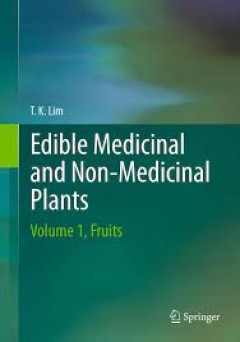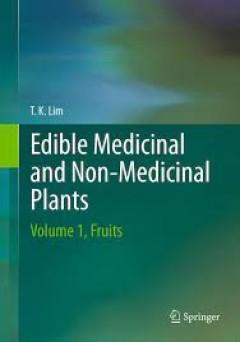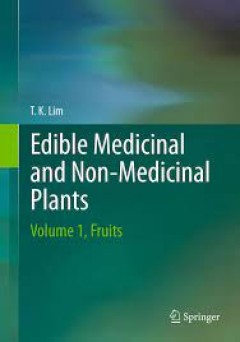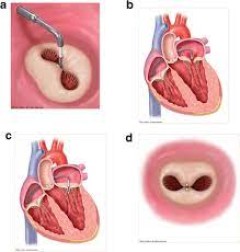Filter by

New Social Mobility Second Generation Pioneers in Europe
This open access book comparatively analyses intergenerational social mobility in immigrant families in Europe. It is based on qualitative in-depth research into several hundred biographies and professional trajectories of young people with an immigrant working-class background, who made it into high-prestige professions. The biographies were collected and analysed by a consortium of researcher…
- Edition
- -
- ISBN/ISSN
- 9783031055669
- Collation
- -
- Series Title
- -
- Call Number
- -

The Plant Stem : A Microscopic Aspect
This unique and attractive open access textbook combines the beauty of macroscopic pictures of plant stems with the corresponding colorfully stained images of anatomical micro-structures. In contrast to most botanical textbooks, it presents all the stem characteristics as photographs and shows the microscopic reality. The amount of text is reduced to a minimum, and the scientific information is…
- Edition
- -
- ISBN/ISSN
- 978-3-319-73524-5
- Collation
- VII, 207 halaman
- Series Title
- -
- Call Number
- 580 PLA

Plants, Society, and the Environment
Affordable Learning Georgia Grants Collections are intended to provide faculty with the frameworks to quickly implement or revise the same materials as a Textbook Transformation Grants team, along with the aims and lessons learned from project teams during the implementation process.
- Edition
- -
- ISBN/ISSN
- -
- Collation
- -
- Series Title
- -
- Call Number
- 580 HAR p

Edible Medicinal and Non-Medicinal Plants
Volume 10 is part of a multi compendium Edible Medicinal and Non-Medicinal Plants. This work is of significant interest to medical practitioners, pharmacologists, ethnobotanists, horticulturists, food nutritionists, botanists, agriculturists, conservationists and general public. 59 plant species with edible modified stems, roots and bulbs in the families Amaranthaceae, Cannaceae, Cibotiaceae, C…
- Edition
- 1
- ISBN/ISSN
- 978-94-017-7275-4
- Collation
- -
- Series Title
- -
- Call Number
- X, 659

Edible medicinal and non medicinal plants. Volume 11, Modified stems, roots, …
This book covers such plants with edible modified storage subterranean stems (corms, rhizomes, stem tubers) and unmodified subterranean stem stolons, above ground swollen stems and hypocotyls, storage roots (tap root, lateral roots, root tubers), and bulbs, that are eaten as conventional or functional food as vegetables and spices, as herbal teas, and may provide a source of food additive or ne…
- Edition
- -
- ISBN/ISSN
- 9783319260624
- Collation
- x, 392 pages
- Series Title
- -
- Call Number
- 581.632

Edible medicinal and non medicinal plants. Volume 10, Modified stems, roots, …
This book covers such plants with edible modified storage subterranean stems (corms, rhizomes, stem tubers) and unmodified subterranean stem stolons, above ground swollen stems and hypocotyls, storage roots (tap root, lateral roots, root tubers), and bulbs, that are eaten as conventional or functional food as vegetables and spices, as herbal teas, and may provide a source of food additive or ne…
- Edition
- -
- ISBN/ISSN
- 9783319260624
- Collation
- x, 392 pages
- Series Title
- -
- Call Number
- 581.632

Edible Medicinal and Non-Medicinal Plants
This book covers such plants with edible modified storage subterranean stems (corms, rhizomes, stem tubers) and unmodified subterranean stem stolons, above ground swollen stems and hypocotyls, storage roots (tap root, lateral roots, root tubers), and bulbs, that are eaten as conventional or functional food as vegetables and spices, as herbal teas, and may provide a source of food addi…
- Edition
- 1
- ISBN/ISSN
- 978-3-319-26064-8
- Collation
- -
- Series Title
- -
- Call Number
- X, 690

Edible Medicinal and Non-Medicinal Plants
This book covers such plants with edible modified storage subterranean stems (corms, rhizomes, stem tubers) and unmodified subterranean stem stolons, above ground swollen stems and hypocotyls, storage roots (tap root, lateral roots, root tubers), and bulbs, that are eaten as conventional or functional food as vegetables and spices, as herbal teas, and may provide a source of food additive o…
- Edition
- 1
- ISBN/ISSN
- 978-3-319-26061-7
- Collation
- -
- Series Title
- -
- Call Number
- X, 392

Edible Medicinal and Non Medicinal Plants
Volume 9 is part of a multicompendium Edible Medicinal and Non-Medicinal Plants, on plants with edible modified stems, roots and bulbs from Acanthaceae to Zygophyllaceae (tabular) and 32 selected species in Alismataceae, Amaryllidaceae, Apiaceae, Araceae, Araliaceae, Asparagaceae, Asteraceae, Basellaceae, Brassicaceae and Campanulaceae in detail. This work is of significant interest to medical …
- Edition
- 1
- ISBN/ISSN
- 978-94-017-9510-4
- Collation
- -
- Series Title
- 73 b/w illustrations, 49 illustrations in colour
- Call Number
- X, 1036

Edible medicinal and non medicinal plants. Volume 11, Modified stems, roots, …
This book covers such plants with edible modified storage subterranean stems (corms, rhizomes, stem tubers) and unmodified subterranean stem stolons, above ground swollen stems and hypocotyls, storage roots (tap root, lateral roots, root tubers), and bulbs, that are eaten as conventional or functional food as vegetables and spices, as herbal teas, and may provide a source of food additive or ne…
- Edition
- -
- ISBN/ISSN
- 9783319260624
- Collation
- x, 392 pages
- Series Title
- -
- Call Number
- 635.049
 Computer Science, Information & General Works
Computer Science, Information & General Works  Philosophy & Psychology
Philosophy & Psychology  Religion
Religion  Social Sciences
Social Sciences  Language
Language  Pure Science
Pure Science  Applied Sciences
Applied Sciences  Art & Recreation
Art & Recreation  Literature
Literature  History & Geography
History & Geography